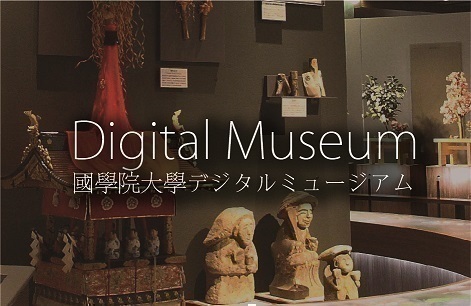- トップ
- Encyclopedia of Shinto
- Gion/Tsushima Shinkō
Encyclopedia of Shinto
| Main Menu: | |
| Links: |
詳細表示 (Complete Article)
| カテゴリー1: | 6. Belief and Practice |
|---|---|
| カテゴリー2: | Shrines and Cultic Practices |
| Title | Gion/Tsushima Shinkō |
| Text | This faith takes Gozutennō and Susanoo as "enshrined deities" (saijin). The kami Gozutennō is a conflation of the Indian guardian deity of Gion Shōja (Jetavanavihāra monasteries) and Chinese Onmyōdō, which was further combined with Susanoo in Japan. Whilst the cult of Gozutennō was based on the belief in "vengeful spirits" (goryō) which took hold in the Heian Period, it developed in its own original direction. Goryō were ghostly beings that brought on extensive disaster and plague. They could be the spirits of people who died with unresolved resentment or could be "plague kami" (gyōekishin) like Gozutennō who caused epidemics. Goryō-e rituals were performed to console and appease goryō or to send them away in order to prevent disease. It is believed that Gion's Goryō-e date back to the latter half of the tenth century, attracting a fervent following among residents of Heiankyō, where it became customary to hold the "unique festival" (reisai) of Gion Shrine (present-day Yasaka Jinja) in the sixth month of every year. The origin of the festival may be related to popular belief in a Chinese deity to whom oxen were killed and offered, and can be regarded as a prototypical festival of urban resident in Japan. In 975, Gion rinjisai (a type of festival conducted at shrines that differ from customary festivals) began and the shrine became a recipient of offerings from the imperial court. During the Insei Period retired emperors were the de jure sponsors of the festivals. In addition to dressing up children and using them as umaosa (riders of horses donated to the shrine by the government), the custom of furyū no dashimono (where crowds dressed up in costumes, played music, and danced) was characteristic of Gion. In the Muromachi Period, the festival was adopted by the populace (machishū ) of Kyoto. It is symbolized by dashi or yamaboko floats and has continued to this day as the annual "Gion Festival." In the medieval period Gion-e rituals spread to the regions, becoming festivals in Kamakura, Yamaguchi and other regional cities. Many places conduct these as festivals for "guardian kami" (chinjugami), and called them Gion Festival, the Tennō Festival, and the Somin Festival and other names. Based on sources, there are various explanations for the founding of Gion Shrine, with it being dated to 876 or the first half of the tenth century. The Nihon kiryaku records that a Tenjin Hall was established by an ascetic monk (Shugyōsō) in 926. Gion shrines subsequently spread to various regions; but when the Meiji government instituted its "kami and Buddha separation" (shinbutsu bunri) policies, the shrine-temple complex Gion Kanjin'in in Kyoto was renamed the shrine "Yasaka Jinja," and many other Gion shrines took the opportunity to rename themselves Yasaka shrines as well. Gozutennō and Susanoo are also the "enshrined kamis" (saijin) at Tsushima Jinja (also called Tsushima Gozutennōsha), located in present-day Tsushima City, Aichi Prefecture. Shrine legend relays that the "wild aspect" (aramitama) of Gozutennō is lodged at Izumo, while the "calm aspect" (nigimitama) came to Japan from the Korean peninsula, after stopping at Tsushima. This legend may express the links between "Tsushima" 対馬 (the island located between Korea and Japan) and "Tsushima" 津島 (in Aichi Prefecture), both important locations related to sea transportation. Tsushima Shrine's "unique festival" (reisai), the Tsushima Matsuri, is held in the sixth month of the lunar calendar (July in the modern calendar) and is different in atmosphere from the Gion Festival. The festival includes a ritual of floating boats called danjiri on the Tennō River, and a ritual of placing reeds on boats and releasing them into the river. — Yonei Teruyoshi |




